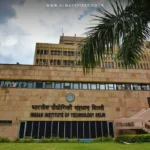
With Delhi’s air quality plummeting into the ‘poor’ category, Union Transport Minister Nitin Gadkari has suggested a complete shift to CNG-powered transportation as a potential solution to the capital’s pollution problem. Highlighting the importance of sustainable development, Gadkari emphasized the need to embrace biofuels and electric alternatives alongside CNG to address long-term environmental challenges.
Delhi’s Air Quality Woes
As of 8 AM, data from the Central Pollution Control Board (CPCB) indicated Delhi’s Air Quality Index (AQI) at 274 (poor). Specific locations reported concerning levels:
- Anand Vihar: 294
- Punjabi Bagh: 298
- ITO: 235
- Okhla Phase-2: 277
- IGI Airport (T3): 256
An AQI between 201-300 is classified as poor, signifying adverse impacts on sensitive groups. Visuals from areas like Akshardham Temple, ITO, and Delhi-Noida Direct Flyway depicted dense smog, causing reduced visibility and raising public health concerns.
Supreme Court’s Stance on Anti-Pollution Measures
The Supreme Court (SC) has taken a stringent approach toward Delhi’s pollution crisis, refusing to relax the Graded Response Action Plan (GRAP-IV) measures. Key observations and directives include:
- No Relaxation Without Improvement: The SC clarified it would consider modifications to GRAP-IV only after observing a consistent downward trend in AQI levels.
- Accountability of NCR States: Delhi, Rajasthan, Haryana, and Uttar Pradesh were reprimanded for failing to compensate construction workers affected by the restrictions.
- Coordination Issues: Reports from court commissioners revealed a lack of coordination among authorities such as the MCD, Delhi Police, and Delhi Pollution Control Committee (DPCC).
- CAQM Responsibility: The SC directed the Commission for Air Quality Management (CAQM) to enhance inter-agency coordination and enforce mitigation measures effectively.
The Way Forward
Nitin Gadkari’s proposal underscores the importance of transitioning to cleaner fuels and electric vehicles, aligning with India’s broader sustainability goals. However, the immediate challenge remains effective enforcement of anti-pollution measures, improved coordination among agencies, and consistent public participation in reducing emissions.
Delhi’s air quality crisis serves as a stark reminder of the urgency required to combat urban pollution through policy, technology, and collective action.








































Leave a Reply